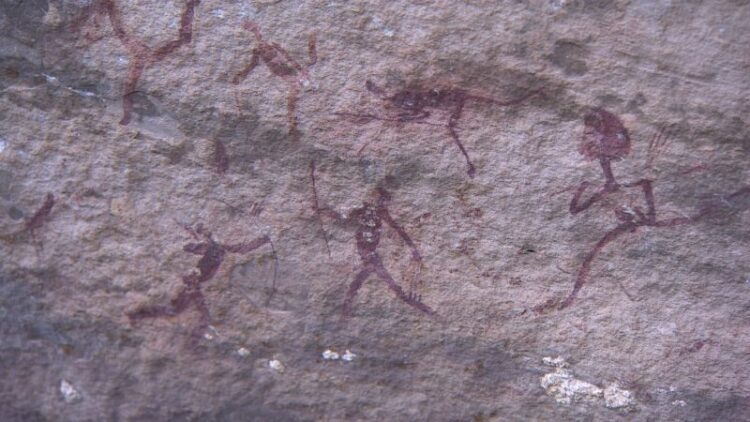Story highlights
In Lesotho, a network of caves holds important religious significance
Pilgrims visit them to commune with their ancestors
The caves are home to San rock paintings that date back thousands of years
CNN
—
Every year, the Basotho people, who live in the southern African country of Lesotho, make a pilgrimage to a network of caves that connect countless generations with their ancestors across thousands of years.
Home of dinosaur footprints and millennia-old rock paintings, these caves harbor some incredible history.
Explore the caves of Lesotho
Holding candles aloft, these pilgrims file into the caves to feast, pray and commune with the dead.
“It’s the key to religion in southern Africa,” says David Coplan, emeritus professor of social anthropology at the University of Witwatersrand.
“God is very high, and he may not be able to see you looking down from such a perch. But your ancestors know who you are and they’re interested in you, and they will funnel the blessings in their direction.”
‘Everyone is free to come and pray’
Lesotho’s valley of the ancestors
Coplan believes these pilgrimages are relatively new, probably gaining popularity around the early 20th century. The professor has visited the caves many times himself, and has even been initiated as a healer.
“There is no religious authority here,” he explains. “Everyone is free to come and pray.”
Ceremonies at the caves are a fusion of Christianity and indigenous religions. Christian ministers can be seen standing side by side with Zulu healers, coming together to serve devotees.
Some will stay for a weekend, others much longer, but all know that they are in a place with a history and significance way beyond themselves.
The cave network has been home to indigenous people for thousands of years. The evidence is all over the walls in the form of San rock paintings, which capture a hunter-gatherer way of life that has nearly disappeared from Lesotho.
Pieter Jolly, a world expert in the rock paintings of the San, says the artwork has a spiritual dimension.
“Much of (the art) relates to trance experiences, so unrealistic-looking figures, animals, strange creatures,” he explains. “The major focus of San painting was to depict the spirit world. The paintings acted as a window into the spirit world for people who had not ‘tranced’ and had not experienced what shamans had.”
Ancient rock paintings revealed
“When they went into a trance, which was achieved largely through dancing and rhythm and clapping of women, they felt as if they had transformed into certain animals of power,” Jolly says.
“When you go into the spirit world – which is where you go in a trance – you go there to fight evil spirits that are bringing discord or illness or death in the community, you are safeguarded by that animal’s power.”
“Another world existed, a spiritual world, behind the rock face.”
But some rock faces are under threat, their paintings eroded by the elements and cattle still kept around some of the overhangs. What will remain however is the power of these caves to bridge the secular and the spiritual; to draw together two worlds, the living and the dead.
The Lesotho connection: From African fish farm to Japanese chefs
Source link : https://www.cnn.com/travel/article/lesotho-caves-basotho-pilgrimage-san-art/index.html
Author :
Publish date : 2016-06-07 07:00:00
Copyright for syndicated content belongs to the linked Source.
